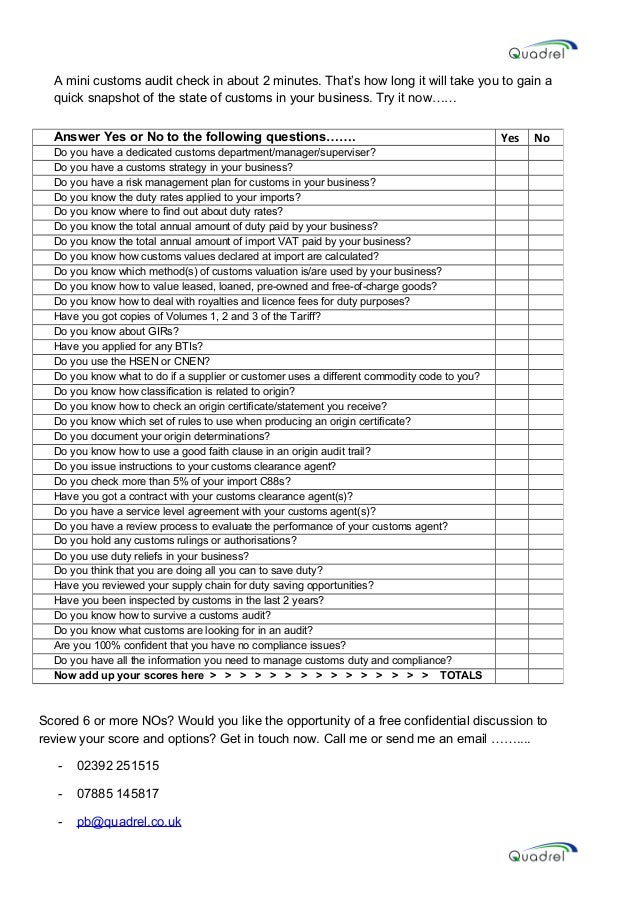It Audit Checklist


The following are 10 steps to conduct your own basic IT security audit. While these steps won't be as extensive as audits provided by professional consultants, this DIY version will get you started on the road to protecting your own company. DEFINING THE SCOPE OF YOUR AUDIT: CREATING ASSET LISTS AND A.
The correct management and maintenance of your IT infrastructure is critical for success. Take a look at our audit checklist to ensure you are getting the maximum return on your technology investment. Why you should conduct an IT audit for Company Communications The introduction of any new IT component carries an inherent risk to any system. Individually, they may seem easy enough to manage and maintain, but to get the bigger picture of the entire communications infrastructure you need to take the time to do an IT audit.
An IT audit can help to determine the effectiveness and efficiency of your company’s communications network. It identifies any possible issues, safety risks, or even productivity leaks, so you can fix these issues before they result in your business recording significant losses. Read: Objectives for a company communications IT audit To get the most out of your communications system, your IT audit should: 1. Examine and catalogue the system’s past ‘communications threat’ history and anticipate future risks, e.g. Frequency of system outages 2. Catalogue and update the list of hardware and software components for accounting purposes and equipment lifecycle planning 3. Identify any further opportunities to improve communications channel efficiency 4.
Look for causes of frequent problems and productivity drains, e.g. Slow internet servers 5. Billie Holiday The Complete Commodore Recordings Rar Extractor. Evaluate and compare new system performance with old communications system activity to monitor improvements 6. Ensure that the IT infrastructure is configured correctly to hardware and software specifications 7. Ensure backup systems are sufficient, monitored and tested 8. Ensure security measures are working 9. Check that all software licensing is correct and up to date to prevent software malfunction or piracy issues 10.
Develop a security threat response plan 11. Report on recommended actions to fix any issues IT Audit for Company Communications Checklist: 1. List of hardware assets 2. List of software installed on all machines 3. List of operating system versions, security/bug/service pack updates 4. Network design and architecture analysis: identify any opportunities to improve performance and support response times with IT providers 5. System backup protocol and data recovery readiness: monitored and tested regularly 6.
Identity and access management: access control and authorisation 7. Security analysis and performance: level of encryption, firewalls, passwords, virus and spyware detection and prevention, and data security 8. Driver Scanner Mustek A3 Usb 1200 Pro.
Analysis and reporting on server hardware performance and appropriateness 9. Analysis of hardware and software in all PC-based equipment and how they may impact performance and productivity 10. Email protocols: email security and spam filters, encryption and steganography When you should conduct an IT audit for company communications The technology landscape is constantly changing and so too are the nature of threats to it.
This is why it’s so important to conduct an IT audit regularly. Most companies audit their IT infrastructure annually, or at the very least whenever a new system is installed, to ensure total communication efficiencies. IT audits can be done internally, or you can bring in external auditors to perform assessments. The scope of the audit will differ depending on its goals; read about the benefits of. By ensuring that your company’s system is maintained and properly managed, you can leverage the benefits of IT to gain critical efficiencies to help you meet your business goals. Vita Enterprise Solutions Vita Enterprise Solutions draws on the insight, expertise and know-how generated from 20 years of servicing the Australian market.
Contact us on or download our on What CIOs and IT Managers Want.